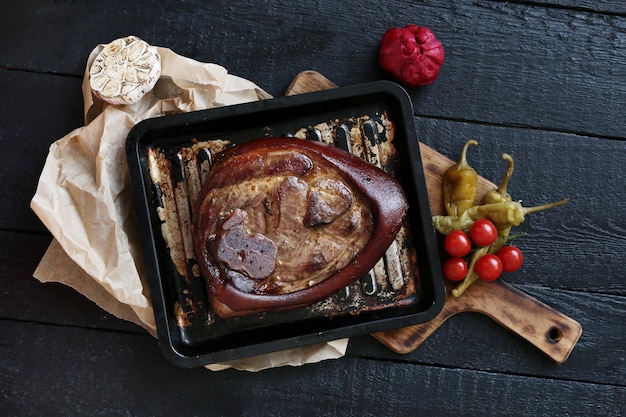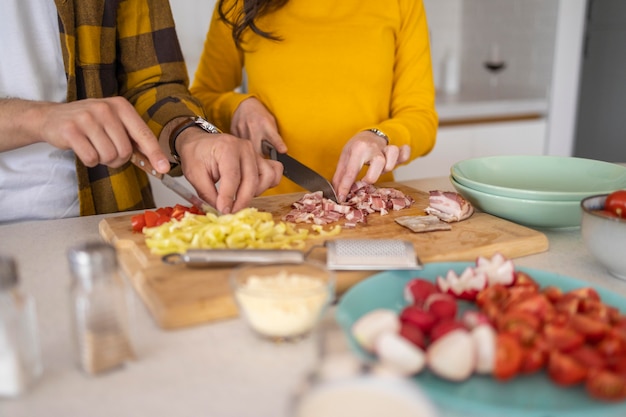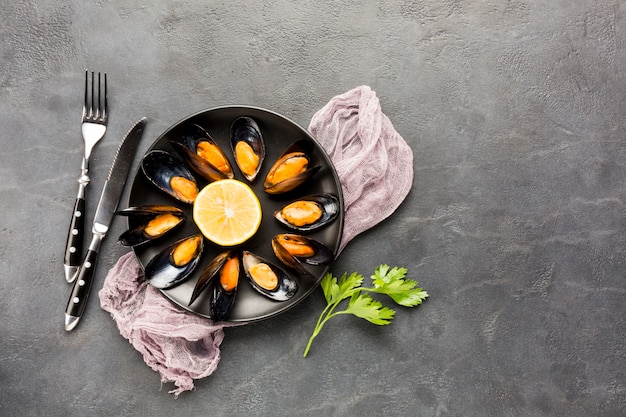Part 1: Understanding the Anatomy of a Meatloaf

1.1. The Meat Matters: A Variety of Options
The first thing to consider is the star of the show – the meat. While classic beef meatloaf reigns supreme, there's a whole world of variations to explore:1.1.1. Classic Beef Meatloaf: A Hearty Favourite
This is the gold standard, and for good reason. It's full of flavour, satisfyingly hearty, and a timeless crowd-pleaser.1.1.2. Chicken Meatloaf: A Lighter Option
If you're seeking a lighter meal, chicken meatloaf is a fantastic choice. Often seasoned with herbs like rosemary and thyme, it's a perfect alternative for those watching their calorie intake.1.1.3. Turkey Meatloaf: Lean and Delicious
Similar to chicken, turkey meatloaf is a lean and healthy option. It's often mixed with ground pork or veal for a richer flavour and texture.1.1.4. Veggie Meatloaf: A Meatless Marvel
For vegetarians or those looking for a meatless meal, veggie meatloaf is a delicious and satisfying choice. It's made with a medley of vegetables like mushrooms, onions, carrots, and can be bound together with breadcrumbs, oats, or lentils.1.2. Beyond the Meat: The Importance of Fillings and Binders
While the type of meat plays a crucial role, the supporting cast of fillings and binders can also impact the cooking time and overall texture.1.2.1. Fillings: Adding Flavor and Texture
Onions, peppers, celery, and even hard-boiled eggs are common additions that contribute to both flavour and texture. Keep in mind that these ingredients can take a bit longer to cook through compared to the meat itself.1.2.2. Binders: Ensuring Cohesion and Moistness
Binders like breadcrumbs, oats, or even crushed crackers act like glue, holding the meatloaf together and adding moisture.A little secret: Breadcrumbs tend to absorb moisture more readily than oats, potentially resulting in a slightly quicker cooking time.
Part 2: The Art of Doneness: Achieving the Perfect Meatloaf

2.1. Size Matters: A Guide to Cooking Times
The first rule of thumb: size matters! A smaller meatloaf will naturally cook faster than a larger one. So, let's break down cooking time estimations based on size:| meatloaf size | Approximate Baking Time |
|---|---|
| Small (1-1.5 pounds) | 45-60 minutes |
| Medium (2-2.5 pounds) | 1 hour - 1 hour 15 minutes |
| Large (3-3.5 pounds) | 1 hour 30 minutes - 1 hour 45 minutes |
Important Note: These are just estimates. The best way to ensure doneness is to rely on a meat thermometer.
2.2. The Meat Thermometer: Your Culinary BFF
A trusty meat thermometer is your most reliable tool for achieving the perfect meatloaf.2.2.1. Safe internal temperature: The Gold Standard
The USDA recommends an internal temperature of 160°F (71°C) for meatloaf, ensuring all harmful bacteria are eliminated.2.2.2. Using Your Meat Thermometer: A Simple Guide
Insert the thermometer into the thickest part of the meatloaf, ensuring it's not touching any bones.2.3. The Meatloaf Equation: Understanding Factors Affecting Cooking Time
Beyond size, other factors can influence cooking time:2.3.1. Oven Temperature: Preheating is Key
Always preheat your oven to the desired temperature before baking your meatloaf. This ensures even cooking and prevents cold spots.2.3.2. Oven Temperature Ranges: Finding the Right Balance
Most meatloaf recipes recommend baking at 350°F (175°C). However, you might need to adjust the temperature slightly depending on your oven and the size of the meatloaf.2.3.3. The Baking Dish: Choosing the Right Vessel
You'll need an oven-safe dish to bake your meatloaf. A baking sheet, loaf pan, or even a casserole dish can be used. Be sure to grease the dish with butter, cooking spray, or olive oil to prevent sticking.Part 3: Navigating the Meatloaf Minefield: Avoiding Common Mistakes

3.1. Overmixing: The Enemy of Tenderness
It's tempting to mix the meatloaf ingredients until they're perfectly smooth, but don't! Overmixing can lead to a dense, tough meatloaf.3.1.1. The Importance of Gentle Mixing
Mix the ingredients just until they're combined. Remember, a little bit of texture is good!3.2. Packing Too Tightly: The Secret to Moisture
When shaping your meatloaf, gently pat it into shape. Avoid pressing too hard, as this can result in a dense, dry meatloaf.3.2.2. Shaping with Care: A Gentle Touch
Gently shape the meatloaf into a loaf and place it in the baking dish.3.3. Neglecting Doneness: The Role of the Meat Thermometer
The most important rule: always check the internal temperature of your meatloaf using a meat thermometer.3.3.1. Doneness is Key: Checking and Reacting
If the internal temperature is below the safe 160°F (71°C), continue baking until it reaches the desired temperature.Part 4: Adding the Finishing Touches: Glazing and Serving
Your meatloaf is nearly ready to shine! Now, let's talk about adding those finishing touches that elevate it from good to great.4.1. Glazing the Meatloaf: A Delicious Boost
A glaze can turn your meatloaf from ordinary to extraordinary. It adds a layer of flavour and creates a beautiful caramelized crust.4.1.1. Glaze Ingredients: A World of Possibilities
You can use a simple glaze made with ketchup, brown sugar, and mustard, or get creative with ingredients like barbecue sauce, balsamic vinegar, or even a honey-mustard glaze.4.1.2. Glaze Timing: The Perfect Finishing Touch
Add the glaze during the last 15-20 minutes of baking to allow it to caramelize and create that irresistible crust.4.2. Serving Up Your Masterpiece: The Perfect Sides
Once your meatloaf is cooked, let it rest for 10-15 minutes before slicing and serving.4.2.1. side dish Options: Pairing Perfection
mashed potatoes, green beans, a simple salad, or even roasted vegetables are classic companions for meatloaf.4.2.2. Leftovers: Putting Your Meatloaf to Good Use
Any leftover meatloaf can be stored in the fridge for up to 3 days and reheated in the oven or microwave. It's also perfect for sandwiches, salads, or even a hearty Shepherd's Pie.Part 5: Beyond the Ordinary: Exploring meatloaf variations
The classic beef meatloaf is a winner, but don't let it limit your creativity. There's a whole world of variations waiting to be explored.5.1. The World of Flavour Combinations: Creating Your Own Signature Meatloaf
Experiment with different herbs and spices, like rosemary, thyme, garlic, or even a pinch of cayenne pepper. Add vegetables like carrots, celery, onions, or even chopped bell peppers for extra texture and flavour.5.2. Meatloaf Transformations: Reimagining a Classic
Don't be afraid to think outside the box! You can use leftover meatloaf to create fun dishes:5.2.1. Meatloaf Sliders: A Fun Twist
Slice up your cooked meatloaf and serve it on slider buns with your favourite toppings like cheese, pickles, and onions for a fun twist on a classic.5.2.2. Meatloaf Shepherd's Pie: A Hearty comfort food
Use leftover meatloaf as the base for a comforting Shepherd's Pie. Top it with mashed potatoes and bake until golden brown.Part 6: FAQs: Answers to Your Meatloaf Questions
6.1. Can I freeze meatloaf?
Absolutely! Wrap it tightly in plastic wrap and then in foil. You can freeze it for up to 3 months. Thaw it in the refrigerator overnight before baking.6.2. What can I use instead of breadcrumbs?
If you're out of breadcrumbs, you can use crushed crackers, oats, or even ground nuts as substitutes.6.3. How do I keep my meatloaf moist?
Adding a few tablespoons of milk or broth to the mixture can help prevent dryness. You can also incorporate chopped vegetables, which will release moisture as they cook.6.4. Can I bake my meatloaf in a slow cooker?
Yes! Brown the meat and vegetables on the stovetop before adding them to the slow cooker. Cook on low for 6-8 hours or on high for 3-4 hours.6.5. What if my meatloaf is too dry?
If your meatloaf is a bit dry, you can add a little bit of liquid to it before serving. You can also use a gravy or sauce to add moisture. Final ThoughtsThere you have it! A comprehensive guide to meatloaf cooking time, from understanding the basics to exploring variations and tackling common mistakes. Now that you're equipped with the knowledge, go forth and create your own delicious meatloaf masterpiece!Everyone is watching

Corn on the Cob: The Ultimate Guide to Perfectly Cooked Ears
Healthy MealsAh, corn on the cob. Just the name evokes images of sunny days, barbecues, and that sweet, juicy flavour that ...

Perfect Pork Roast Oven Cooking Time: A Guide to Delicious Results
Healthy MealsThere's something truly satisfying about a perfectly roasted pork. The aroma alone is enough to make your mout...

Ham Cooking Time: How Long to Bake, Smoke, or Boil a Delicious Ham
Healthy MealsAh, ham. It's a classic, isn't it? A real crowd-pleaser, especially around holidays. And when done right, it'...

Scallops: The Ultimate Guide to Perfect Cooking
Healthy MealsAh, scallops. Those delicate, sweet, and utterly delicious morsels of the sea. They hold a special place in my...

Spaghetti Squash: The Ultimate Guide to Cooking and Serving
Healthy MealsRemember that time you saw spaghetti squash at the supermarket, looking all bumpy and strange, and thought, "W...
